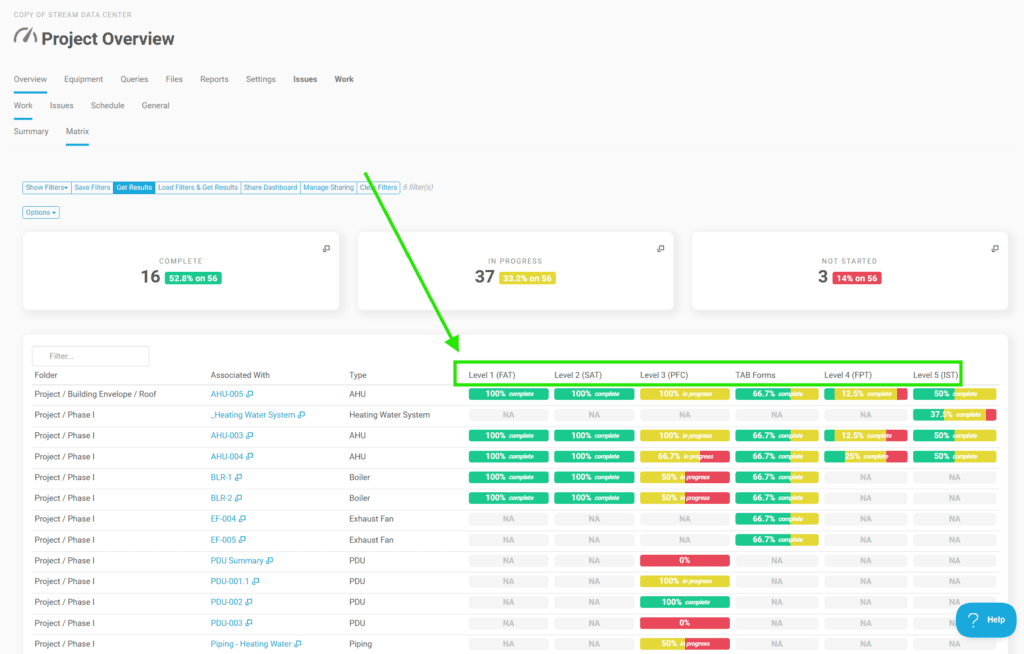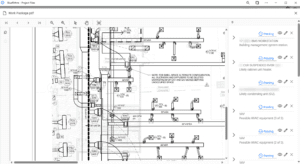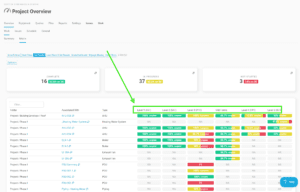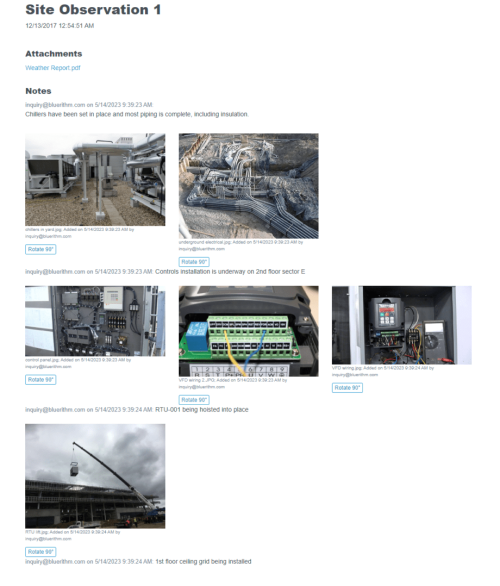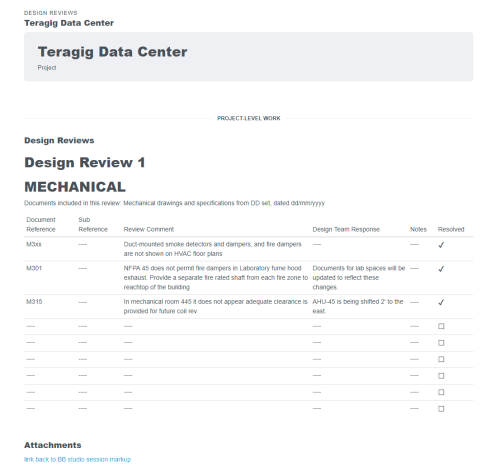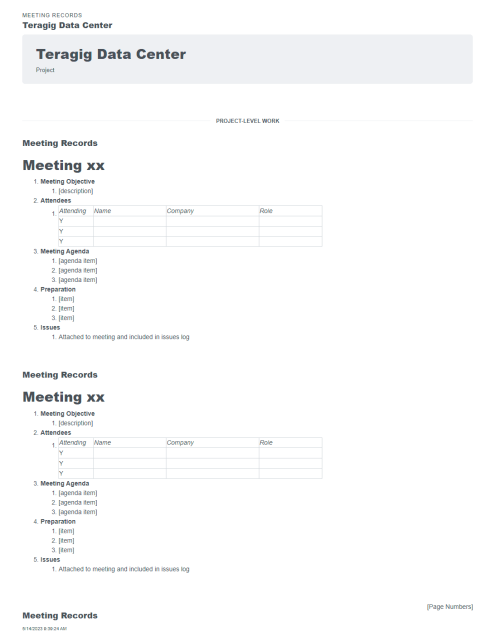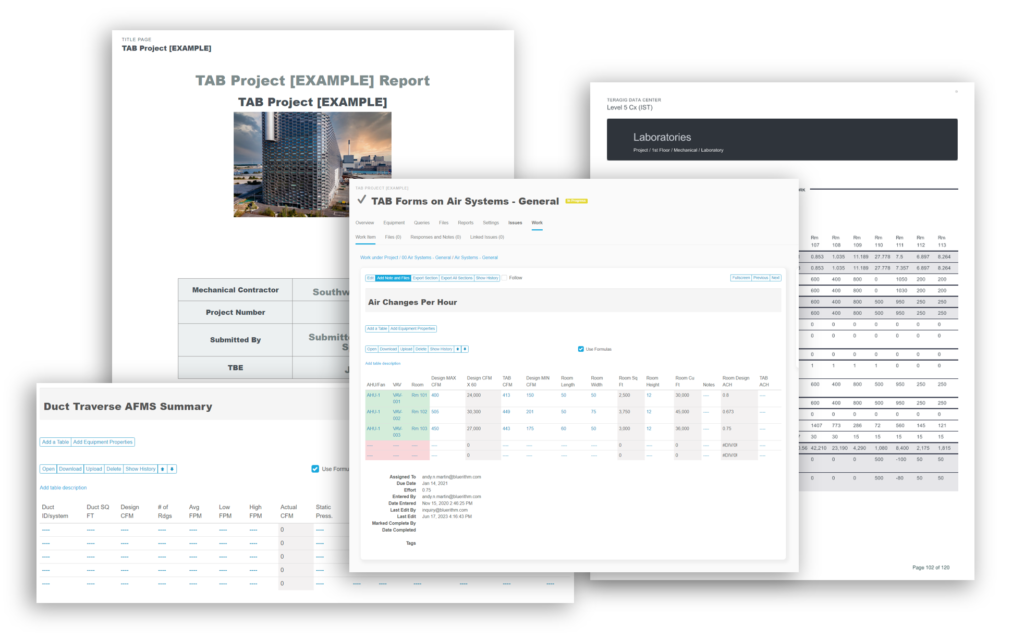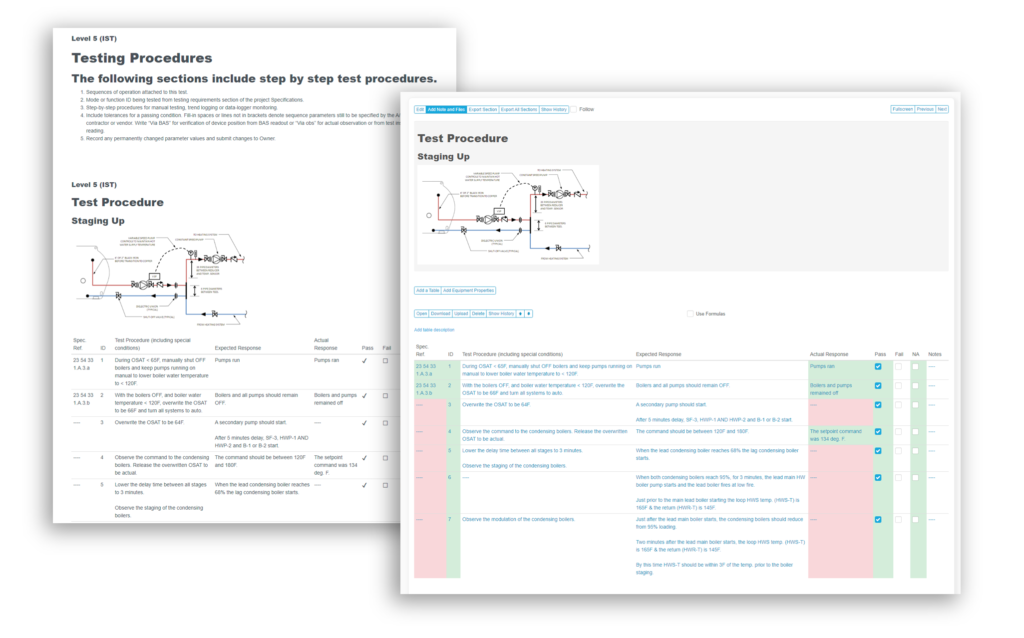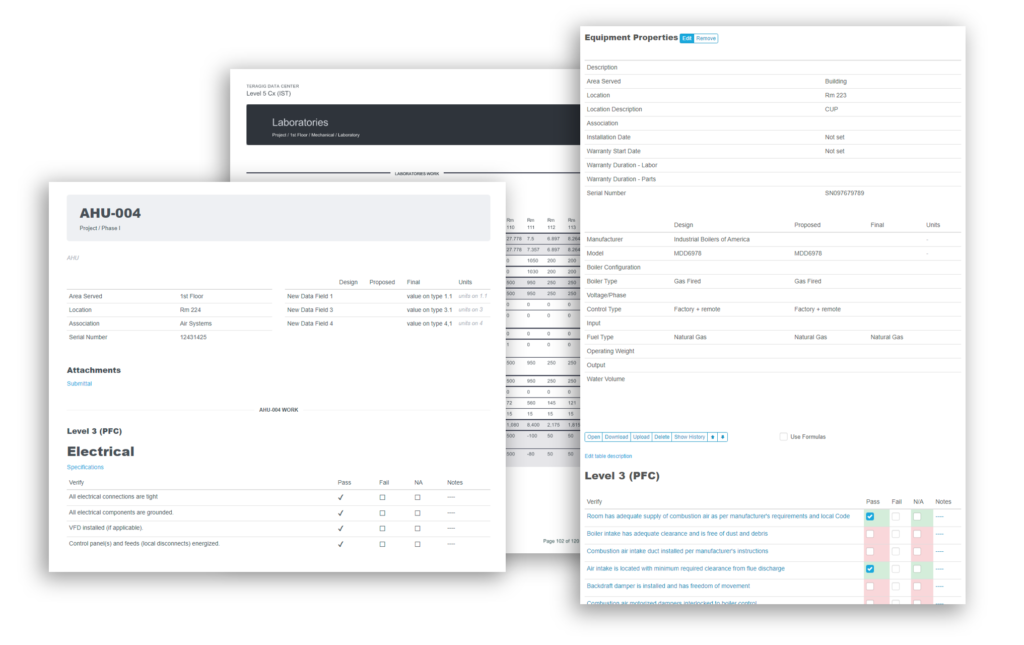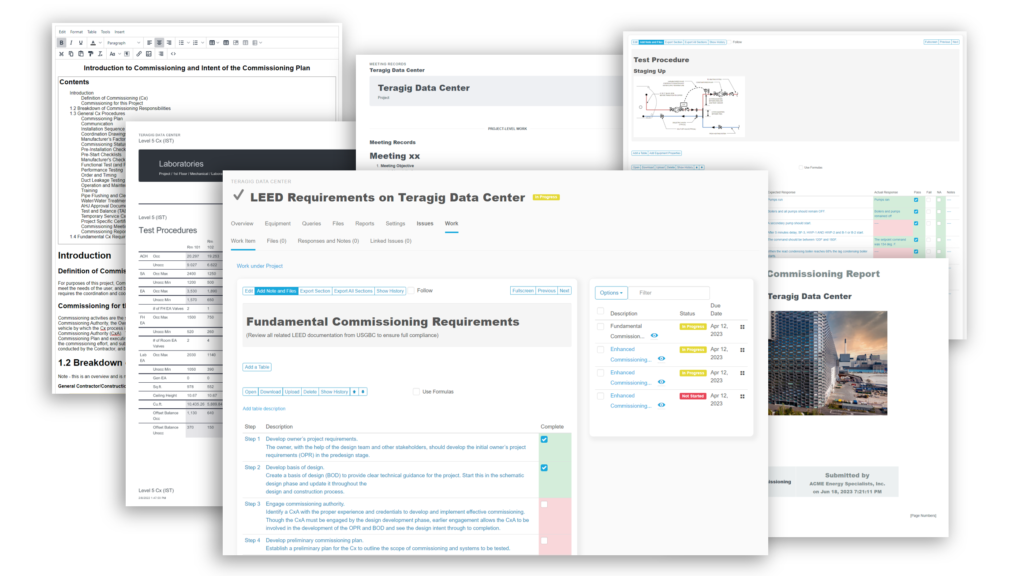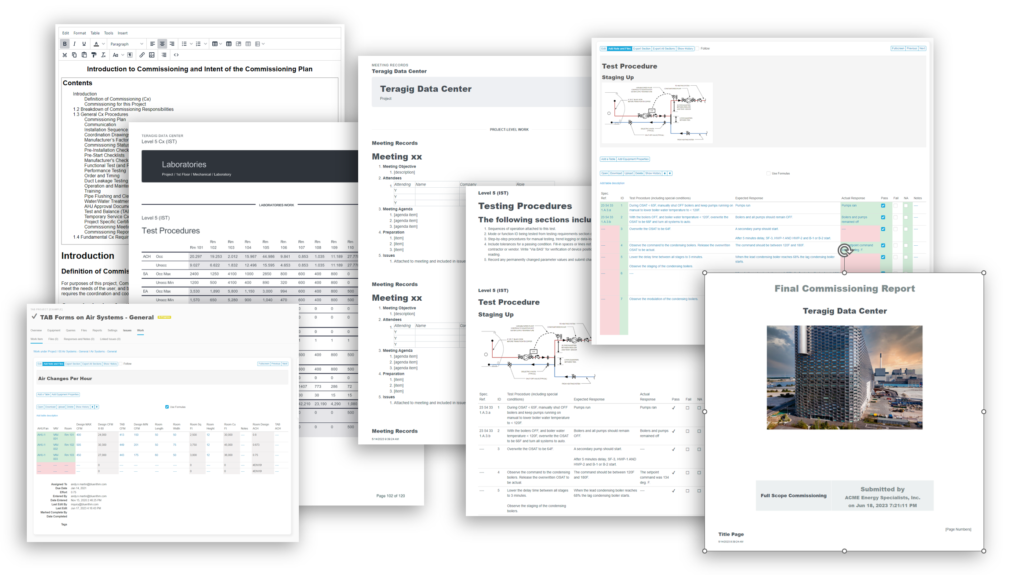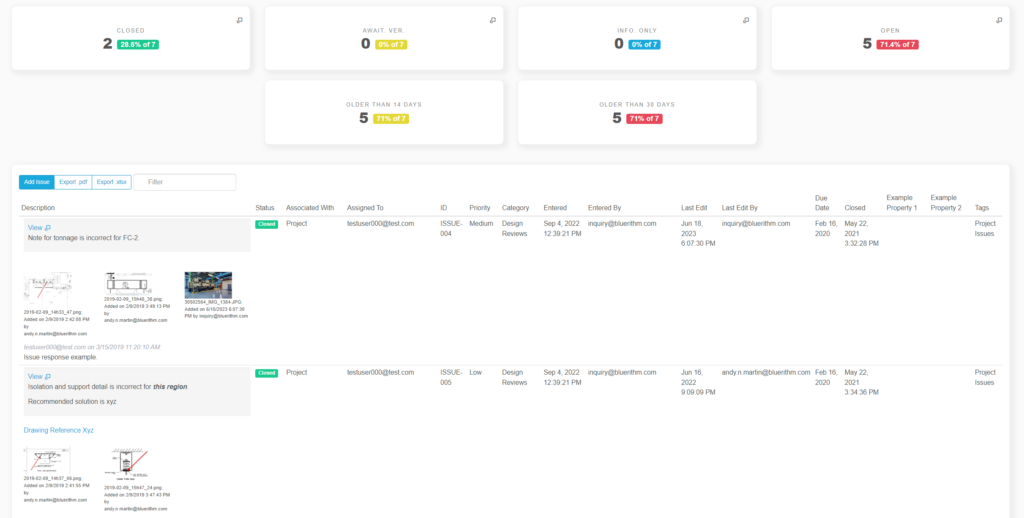At the heart of Bluerithm’s suitability for data center commissioning is its design as a flexible framework rather than a rigid, one-size-fits-all solution. This flexibility is particularly important when managing the five levels of commissioning typical in data centers—from initial equipment verification through integrated systems testing and final acceptance—in addition to design phase, handover, and other process management tasks.
Flexible Workflows for Complex Projects
Bluerithm’s modular architecture allows commissioning managers to define project phases, like the 5 levels of commissioning, and dependencies specific to each data center. Whether teams need to add custom test sequences for new cooling technologies or advanced power systems, the platform accommodates expanded steps without compromising clarity.
- Custom Checklists & Forms: Create multiple templates tailored to each system or test level, ensuring that no step is overlooked.
- Adaptive Test Sequencing: Adjust test flows mid-process as new findings emerge or project timelines change, a necessity for the dynamic nature of data center commissioning.
End-to-End Project Management
Unlike stand-alone commissioning tools, Bluerithm also supports peripheral project activities—planning, submittal tracking, issue resolution, and overall project communications:
- Issue Tracking & Collaboration: Teams can log, prioritize, and monitor issues in real time, ensuring prompt resolution and transparent accountability.
- Document Control: Centralize all project documents, from design specifications to test certificates, with version history and secure sharing permissions.
Real-Time Analytics & Reporting
Modern data centers generate vast amounts of performance data during commissioning. Bluerithm consolidates and translates this data into actionable insights:
- Live Dashboards: Monitor performance metrics, completion status, and flagged issues across different systems and phases.
- Automated Reporting: Generate thorough, shareable reports at the click of a button, tracking progress against project milestones and highlighting any areas requiring attention.
Robust Integrations and Interoperability
Data center projects involve multiple stakeholders, each using specialized tools. Bluerithm’s open architecture supports seamless connectivity:
- BIM Integration: Connect with 3D models to align real-world tests and verifications with design data.
- API Access: Customize integrations with other critical platforms like Procore, Autodesk Construction Cloud, or facility management systems.
- Mobile & Offline Capabilities: Field teams can use Bluerithm on tablets or smartphones, logging data directly from remote corners of the facility—even when internet access is unstable.
Lifecycle Approach
Commissioning does not end once the data center is live; ongoing re-commissioning and upgrades are a reality. Bluerithm supports an iterative process, storing historical data and lessons learned for future projects, expansions, or system retrofits.
Best Practices with Bluerithm
- Early Integration
Incorporate Bluerithm during the design stage so checklists, workflows, and acceptance criteria are aligned with the facility’s design documents from day one. - Holistic Stakeholder Engagement
Provide each team—mechanical, electrical, networking, security—with tailored access to Bluerithm. Everyone sees the data they need, and no more. - Robust Documentation
Centralize all commissioning documents, issues, and test results. This single “source of truth” reduces confusion and helps teams resolve discrepancies quickly. - Incremental Validation
Use real-time insights to adjust testing strategies as you progress from Level 1 to Level 5, ensuring continuous alignment with evolving project conditions and requirements. - Ongoing Optimization
Continue using Bluerithm post-handover for re-commissioning cycles, expansions, or equipment upgrades. Historical data and prior results accelerate future testing and reduce risk.
The 5 Levels of Commissioning in Data Centers
- Level 1 – Equipment Verification & Factory Acceptance
Key components are validated for compliance with design specifications—often at the factory—to ensure equipment meets performance and quality standards. - Level 2 – Installation & Pre-Functional Checks
Once equipment arrives on-site, it is inspected for correct installation, damage, or discrepancies. Teams confirm that nameplates, wiring, and placement align with design documents. - Level 3 – Functional Performance Testing (Individual Systems)
Systems (e.g., power, cooling, security) are tested individually to confirm they function correctly under normal and expected loads, ensuring they meet performance criteria. - Level 4 – Integrated Systems Testing
Different systems are tested in unison to validate their interoperability, especially under various failure or load scenarios (e.g., generator testing alongside cooling systems). - Level 5 – Ongoing Optimization & Final Acceptance
Final commissioning documentation is completed, and all findings are resolved. The facility is handed over with a plan for ongoing re-commissioning to maintain optimal performance.
Conclusion
Commissioning remains an essential pillar of data center success—particularly with the rising complexity introduced by AI, big data analytics, and increasingly higher power densities. Traditional commissioning management platforms, designed for simpler commercial applications, lack the flexibility and depth needed to track the wide range of tasks, levels, phases, checklists, and outcomes that define modern data center projects.
By contrast, Bluerithm stands out as the premier commissioning management solution, thanks to its flexible framework, adaptable workflows, rich analytics, and seamless integrations to Procore, Autodesk Construction Cloud, Revit, and more. From planning and pre-functional testing through complex integrated systems checks, Bluerithm streamlines the entire process, ensuring data center teams stay one step ahead of failures and bottlenecks. The result is a commissioning strategy robust enough to handle today’s most advanced data center projects.


